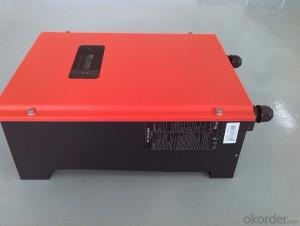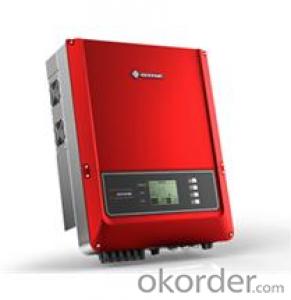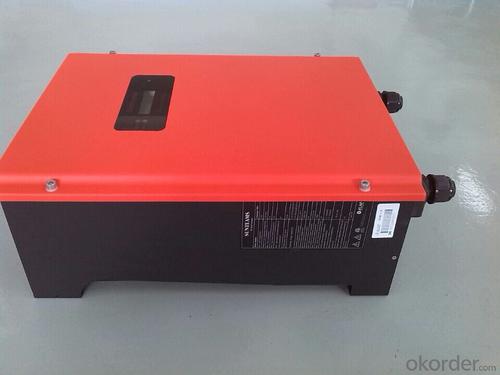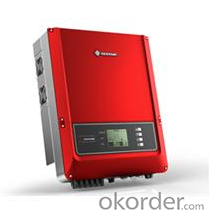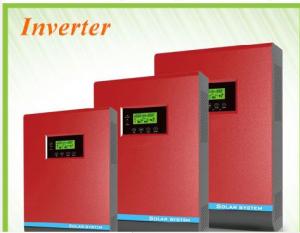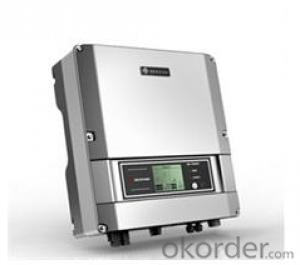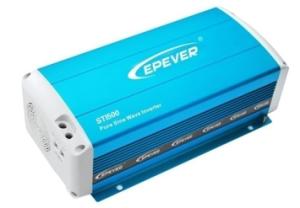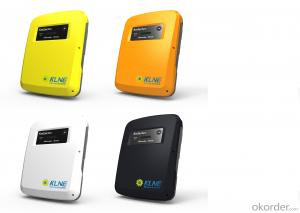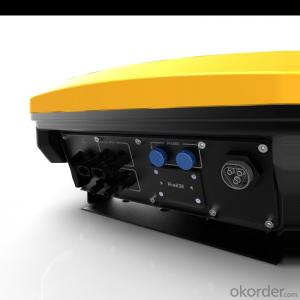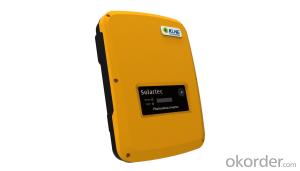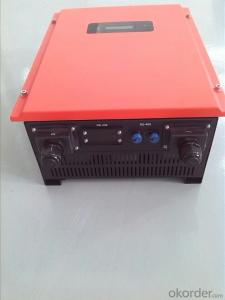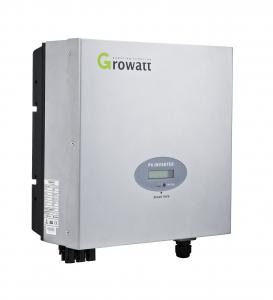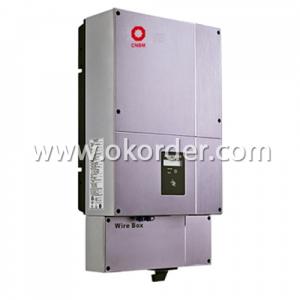Solar Inverter Specs - Off-Grid Type Solo-50 Series
- Loading Port:
- Shanghai
- Payment Terms:
- TT OR LC
- Min Order Qty:
- 10 unit
- Supply Capability:
- 1000 unit/month
OKorder Service Pledge
OKorder Financial Service
You Might Also Like
Product Description:.
This system can keep 3 energy-saving bulbs with 9W working 5 hours per day and a 5W radio working 4 hours a day.
Output voltage: 12V d. c.
It can work for 3 successive rainy days.
● System voltage:12V
Ø
● Charge and discharge current:10A
● Power:50W..
● Dimensions of box:300*220*270mm..
Ø
● Net weight of the box:5kg
Product Datasheet:
Main Accessories | Specifications | No. | Notes |
Box | High-quality rolled steel | 1 | Standard enclosure, optional colors |
PV modules | Polysilicon 50Wp | 1 piece | Optional |
Storage battery | Lead acid, maintenance-free,60Ah | 1 piece | Optional |
Controller | Solo-LS1024S 10A | 1 unit | Standard |
PV accessories shelf | Simple type | 1 set |

Product Advantages:
Powered by DC current
Can used out of doors
High effiency and low noise
FAQ
What is your payment terms?
We accept T/T payment, normally we need 20% T/T in advance, 80% payed before shipment.
What is your packing system?
We put the sistem in the wooden box.
Can you do OEM service?
Yes we can, but we need to do it with a certain order quantity.
- Q: Are there any safety concerns with solar inverters?
- Yes, there can be safety concerns with solar inverters. Some potential issues include electrical shocks from improper installation or maintenance, fire hazards due to faulty wiring or overheating, and electromagnetic radiation. However, these risks can be minimized through proper installation, regular inspections, and adherence to safety guidelines and regulations.
- Q: What is the expected lifespan of a solar inverter?
- The expected lifespan of a solar inverter can vary depending on several factors such as the quality of the equipment, usage patterns, and maintenance. On average, a well-maintained solar inverter can last between 10 to 15 years. However, some high-quality inverters have been known to last up to 20 years or more. Regular maintenance and monitoring can help prolong the lifespan of the inverter and ensure optimal performance throughout its lifespan.
- Q: Can a solar inverter be used with a smart home automation system?
- Yes, a solar inverter can be used with a smart home automation system. Many modern solar inverters are equipped with communication interfaces such as Wi-Fi or Zigbee, allowing them to integrate seamlessly with smart home automation systems. This integration enables homeowners to monitor and control their solar energy production, consumption, and storage remotely, and optimize their energy usage for increased efficiency and cost savings.
- Q: How does a solar inverter handle voltage drop?
- A solar inverter handles voltage drop by continuously monitoring the voltage levels from the solar panels. It adjusts its output voltage accordingly to ensure that the electricity being produced is compatible with the grid or the appliances it is connected to. This helps to compensate for any voltage drop that may occur due to factors such as distance, resistance, or shading, thereby maintaining a consistent and stable power supply.
- Q: How does a solar inverter handle variations in grid voltage?
- A solar inverter handles variations in grid voltage by constantly monitoring the voltage level of the grid. When there are fluctuations or variations in the grid voltage, the inverter adjusts its own output voltage accordingly to ensure a stable and consistent supply of electricity from the solar panels. This allows the inverter to efficiently convert the DC power generated by the solar panels into AC power that matches the grid voltage.
- Q: Can a solar inverter be used with a solar-powered outdoor lighting system?
- Yes, a solar inverter can be used with a solar-powered outdoor lighting system. A solar inverter is responsible for converting the direct current (DC) generated by solar panels into alternating current (AC) that can be used to power various devices, including outdoor lighting systems. By connecting the solar panels to a solar inverter, the generated energy can be efficiently transformed and utilized for powering the lighting system, ensuring sustainable and renewable lighting solutions.
- Q: What is the role of a DC-DC converter in a solar inverter?
- The role of a DC-DC converter in a solar inverter is to convert the direct current (DC) generated by the solar panels into the appropriate voltage and current levels required for the inverter to convert it into alternating current (AC) electricity. The DC-DC converter ensures efficient power transfer and enables the solar inverter to maximize the energy harvested from the solar panels. Additionally, it helps regulate the voltage levels and maintain the stability of the solar power system.
- Q: What maintenance is required for a solar inverter?
- Regular maintenance for a solar inverter typically includes visual inspection for dust or dirt accumulation, checking for loose connections, monitoring the inverter's performance, and ensuring proper ventilation. Additionally, it is recommended to clean the solar panels periodically to maximize the system's efficiency.
- Q: What is the role of a solar inverter in a solar-powered telecommunications system?
- The role of a solar inverter in a solar-powered telecommunications system is to convert the direct current (DC) electricity generated by the solar panels into alternating current (AC) electricity that can be used to power the telecommunications equipment. It also regulates the voltage and frequency of the electricity to ensure a stable and reliable power supply for the system.
- Q: Can a solar inverter be used in systems with different module types?
- Yes, a solar inverter can be used in systems with different module types. Solar inverters are designed to convert the direct current (DC) generated by the solar panels into alternating current (AC) that can be used to power various household appliances and be fed into the electrical grid. They are typically compatible with a wide range of module types, including monocrystalline, polycrystalline, and thin-film solar panels. However, it is important to ensure that the inverter's specifications and capacity align with the specific module types being used to ensure optimal performance and efficiency.
Send your message to us
Solar Inverter Specs - Off-Grid Type Solo-50 Series
- Loading Port:
- Shanghai
- Payment Terms:
- TT OR LC
- Min Order Qty:
- 10 unit
- Supply Capability:
- 1000 unit/month
OKorder Service Pledge
OKorder Financial Service
Similar products
Hot products
Hot Searches
Related keywords
